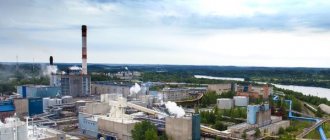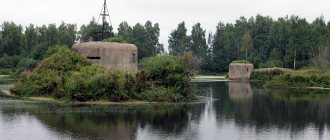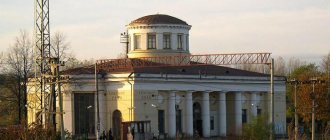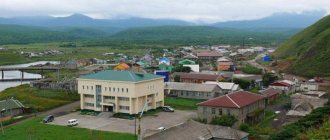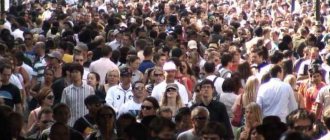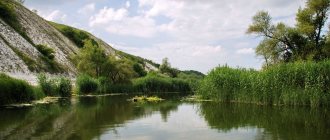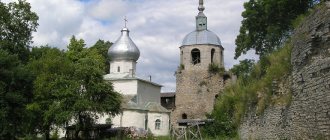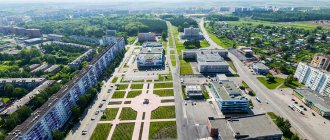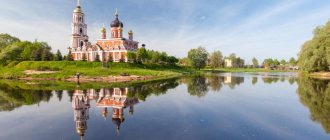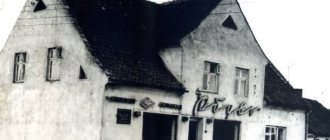Kirovsk is one of the cities in the Leningrad region of Russia. Established in 1931 as a workers' settlement at the State District Power Plant. Since 1953 it has the status of a city. It is a typical Soviet settlement. The name was given after the political and statesman, revolutionary S. M. Kirov, who lived from 1886 to 1934. The sights of the city of Kirovsk are quite unusual and few in number.
About the history of the city
The city was founded on June 13, 1931, as a working village for the builders of a large state district power station (since 1934 it was called the Kirov State District Power Plant, and now it has become the Dubrovskaya Thermal Power Plant or State District Power Plant No. 8). The power plant was built in 3 years - 1.5-2 times faster than similar facilities were built in world practice. In March 1933, the state district power station was launched, and S.M. was present at the ceremony. Kirov.
Before receiving city status, with the renaming to Kirovsk, the working settlement was called Nevdubrstroy (Nevdubstroy) - after the nearest village Nevskaya Dubrovka. The name of Sergei Mironovich was given to the new city because it was Kirov who led Leningrad and the region in the early 1930s, and he initiated the construction of a very large power plant and the village attached to it at that time.
In the 2010s, some public organizations proposed renaming the city to Predtechensk, since it has an Orthodox church of St. John the Baptist. But the reaction of society itself to these proposals was very sluggish, so the renaming did not happen.
The state district power station and the village attached to it were captured by Nazi troops on September 7, 1941. In 1944, after the expulsion of the occupiers, the power plant had to be rebuilt: it was badly damaged during the war years. Despite all the difficulties, in March 1946, the State District Power Plant provided electricity to the reviving Leningrad.
In addition to the power plant, there are many industrial facilities operating in the city of Kirovsk. In particular, local plants and factories produce products for shipbuilding, dry construction mixtures, silicate building materials, corrugated cardboard, plastic products, high-octane fuel, and sound warning devices.
Vintage photo of the city
On the outskirts of the city there is a magnificent museum-reserve “Breakthrough the Siege of Leningrad”, which is the main attraction of Kirovsk. This museum was created directly in the places of fierce battles for Leningrad during the Great Patriotic War. This museum-reserve, the main part of which is located at the left bank abutment of the Ladoga Bridge, includes a large three-dimensional diorama dedicated to breaking the siege of Leningrad and operating since 1985, a tank-monument and an open-air museum of military equipment - a collection of tanks recovered from Ladoga and swamps in the early 2000s and restored especially for the exhibition. In 2022, a new panorama museum was opened in a new building. The museum-reserve also includes: the Nevsky Piglet memorial, Sinyavinsky Heights, the historical site of the blockade breakout (where on January 18, 1943, soldiers of the Leningrad and Volkhov fronts, advancing towards each other, met).
Population
| Population | ||||||
| 1939 | 1945 | 1949 | 1959[2] | 1970[3] | 1979[4] | 1989[5] |
| 8364 | ↘2170 | ↗4216 | ↗11 059 | ↗12 043 | ↗16 985 | ↗23 655 |
| 1996[6] | 1998[6] | 2000[6] | 2001[6] | 2002[7] | 2005[6] | 2006[8] |
| ↗23 700 | ↘23 600 | ↘23 300 | ↘23 100 | ↗24 361 | ↘23 900 | ↘23 500 |
| 2007[6] | 2008[9] | 2009[10] | 2010[11] | 2011[6] | 2012[12] | 2013[13] |
| →23 500 | ↘23 400 | ↘23 221 | ↗25 650 | ↗25 700 | ↘25 491 | ↗25 706 |
| 2014[14] | 2015[15] | 2016[1] | ||||
| ↘25 409 | ↗25 705 | ↘25 691 | ||||
ImageSize = width:700 height:300 PlotArea = left:50 right:40 top:20 bottom:20 TimeAxis = orientation:vertical AlignBars = justify Colors =
id:gray1 value:gray(0.9)
DateFormat = yyyy Period = from:0 till:25706 ScaleMajor = unit:year increment:5000 start:0 gridcolor:gray1 PlotData =
bar:1939 color:gray1 width:1 from:0 till:8364 width:12 text:8,4 textcolor:red fontsize:8px bar:1945 color:gray1 width:1 from:0 till:2170 width:12 text:2 ,2 textcolor:red fontsize:8px bar:1949 color:gray1 width:1 from:0 till:7216 width:12 text:7,2 textcolor:red fontsize:8px bar:1959 color:gray1 width:1 from:0 till :11059 width:12 text:11,0 textcolor:red fontsize:8px bar:1970 color:gray1 width:1 from:0 till:12043 width:12 text:12,0 textcolor:red fontsize:8px bar:1979 color: gray1 width:1 from:0 till:16985 width:12 text:17,0 textcolor:red fontsize:8px bar:1989 color:gray1 width:1 from:0 till:23655 width:12 text:23,5 textcolor:red fontsize:8px bar:1997 color:gray1 width:1 from:0 till:23700 width:12 text:23.7 textcolor:red fontsize:8px bar:1998 color:gray1 width:1 from:0 till:23600 width:12 text:23.6 textcolor:red fontsize:8px bar:2000 color:gray1 width:1 from:0 till:23300 width:12 text:23.3 textcolor:red fontsize:8px bar:2001 color:gray1 width:1 from :0 till:23100 width:12 text:23,1 textcolor:red fontsize:8px bar:2002 color:gray1 width:1 from:0 till:24361 width:12 text:24,4 textcolor:red fontsize:8px bar: 2005 color:gray1 width:1 from:0 till:23900 width:12 text:23.9 textcolor:red fontsize:8px bar:2006 color:gray1 width:1 from:0 till:23600 width:12 text:23.6 textcolor:red fontsize:8px bar:2007 color:gray1 width:1 from:0 till:23500 width:12 text:23.5 textcolor:red fontsize:8px bar:2008 color:gray1 width:1 from:0 till:23400 width:12 text:23.4 textcolor:red fontsize:8px bar:2010 color:gray1 width:1 from:0 till:25650 width:12 text:25.7 textcolor:red fontsize:8px bar:2011 color:gray1 width :1 from:0 till:25700 width:12 text:25.7 textcolor:red fontsize:8px bar:2012 color:gray1 width:1 from:0 till:25491 width:12 text:25.5 textcolor:red fontsize: 8px bar:2013 color:gray1 width:1 from:0 till:25706 width:12 text:25.7 textcolor:red fontsize:8px bar:2014 color:gray1 width:1 from:0 till:25409 width:12 text: 25.4 textcolor:red fontsize:8px bar:2015 color:gray1 width:1 from:0 till:25705 width:12 text:25.7 textcolor:red fontsize:8px bar:2016 color:gray1 width:1 from:0 till:25691 width:12 text:25.7 textcolor:red fontsize:8px
As of January 1, 2016, in terms of population, the city was in 567th place out of 1112[16] cities in the Russian Federation[17].
National composition
According to the 2002 census, the ethnic composition of the population of Kirovsk was as follows[18]:
- Russians - 22280 (91.5%)
- Ukrainians - 553 (2.3%)
- Belarusians - 318 (1.3%)
- Tatars - 141 (0.6%)
- Azerbaijanis - 62 (0.2%)
- Armenians - 59 (0.2%)
- Finns - 37 (0.1%)
- Jews - 37 (0.1%)
- other - 874 (3.6%)
Museum-reserve "Breakthrough the Siege of Leningrad" with a three-dimensional diorama
During the May holidays, traffic is always very busy on the road leading from the Murmansk Highway under the Ladoga Bridge. Cars and excursion buses travel in columns to the “Breaking the Siege of Leningrad” museum-reserve.
Its history began with the creation of the diorama museum “Breakthrough the Siege of Leningrad,” opened on the ramp of the Ladoga Bridge on May 9, 1985, when the USSR celebrated the 40th anniversary of the Great Victory. Here, near the village of Maryino, Kirov district, Leningrad region, the legendary operation to break the blockade of Leningrad took place, codenamed “Iskra”.
Reproduce it on an artistic and documentary canvas; It was planned to immortalize the events of the winter of 1943 in the very place where the blockade of the Northern capital was broken even before the end of the Great Patriotic War, but this idea was realized only in the early 1980s.
A group of artists spent 3 years creating a huge painting with an area of 320 square meters. As consultants, they involved direct participants in those dramatic events - war veterans who contributed to the success of Operation Iskra - to work on the panorama.
For example, in the original version of the diorama on the banks of the Neva, they depicted a command observation post, where full-length figures of Soviet senior officers were drawn. Veterans criticized the idea of placing military command in close proximity to the front line. Therefore, the painters had to draw a firing point in this place instead of a control post.
Museum-reserve "Breakthrough the Siege of Leningrad" with a three-dimensional diorama
The canvas, measuring 40 by 8 meters, located in a ribbon-shaped semicircle, reveals in great detail the events of Operation Iskra. Right before the eyes of museum visitors, thousands of Soviet soldiers go on the attack, with the support of military equipment and aircraft. The terrain is reproduced in such detail that the diorama literally smells of the frosty winter of 1943.
The volumetric part of the diorama depicts the entire bank of the Neva River, riddled with craters, firing points, and trenches. The craftsmen managed to make the line between the model and the canvas completely invisible. It is very difficult to track where the three-dimensional layout part ends and the pictorial part begins.
Memorial stones were solemnly lined up in front of the museum. There are 7 of them - according to the number of days of Operation Iskra. Each of them contains a memorable date and a short summary of events.
The most popular part of the museum among visitors with children is the open-air exhibition in which Soviet tanks that participated in the battles for Leningrad were collected. The first exhibit, the heavy Soviet tank KV-1, was lifted from the Neva in 2003.
In 2007, another KV-1 tank, painted in “winter camouflage” - white paint, was raised from a 15-meter depth of Lake Ladoga. Its release date was September 1941, and already on November 30 the KV was shot down at the Nevsky Piglet. Other armored vehicles are also real, pulled out of the water and swamps, and then carefully restored.
In 2022, modern tanks appeared on the territory of the museum complex “Breaking the Siege of Leningrad” - a gift to the museum from the Russian Ministry of Defense. The exhibition of modern technology was called “Heirs of Heroes”.
And on January 18, 2022, a new three-dimensional panorama “Breakthrough” was opened in a separate building on the territory of the museum complex, made in the modern format of the museum space, providing “full immersion” in the described events of the Great Patriotic War. Both documentary footage and animated films are used, telling about the life of the besieged city and the troops that defended it.
An expanded panorama recreates battle scenes. In it, the creators used thirty figures - depicting real people who fought at this point. A story is told about each of them, facts of his biography are given.
Also interesting is the rich collection of weapons, equipment, ammunition, equipment, and personal belongings discovered by search teams in the Leningrad region.
Links
Rivers of the Neva basin Bolshaya Izhorka · Beryozovka · Rope · Vinokurka · Voitolovka · Volkovka · Glukharka · Gorelyi Ruchek · Gurlovka · Degtyarka · Dubrovka · Volkovka · Eglinka · Ekateringofka · Emelyanovka · Izhora · Kuzminka · Lapka · Lubya · Lustovka · Mga · Moyka (tributary of the Neva) · Murzinka · Murinsky stream · Okkerville · Okhta · Paritsa · Pippolovka · Buckle · Pyalya · Sablinka · Svyatka · Slavyanka · Spartak · Suvatel · Sunya · Tosna · Duck · Ushachka · Kharvazi · Khvoroza · Black · Black · Black · Black River (tributary of the Neva ) · Black River (tributary of the Bolshaya Nevka) · Black River (tributary of the Okkervil) Sleeves, channels and channels of the Neva delta Admiralty Canal · Bolshaya Neva · Bolshaya Nevka · Paper Canal · Griboedov Canal · Zhdanovka · Winter Canal · Karpovka · Krestovka · Kronverksky Strait · Kronverksky Channel · Kryukov Canal · Swan Canal · Malaya Neva · Malaya Nevka · Matisov Canal · Moyka · Monastyrka · Novo -Admiralteysky Canal · Obvodny Canal · Buckle · Smolenka · Middle Nevka · Fontanka · Shkipersky Canal Islands on the Neva 1st Admiralty · 2nd Admiralty · Artillery · Aptekarsky · Nameless · White · Bychiy · Vasilievsky · Glavryba · Gryazny · Decembrists · Ekateringofsky · Elagin · Zayachiy · Kazansky · Kamenny · Kolomensky · Krestovsky · Summer Garden · Maly Rezvyi · Matisov · Monastyrsky · New Holland · New Admiralteysky · Orekhovy · Petrovsky · Petrogradsky · Pokrovsky · Serny · Spassky · Fabrichny Bridges over the Neva Novo-Admiralteysky (project) · Blagoveshchensky ·
Isaac's floating bridge
· Dvortsovy · Troitsky · Liteiny ·
Voskresensky floating bridge
· Bolsheokhtinsky · Alexander Nevsky · Finlyandsky railway ·
Bridge in the alignment of the street.
Kollontai (project) Volodarsky Bolshoy Obukhovsky Kuzminsky railway LadozhskySettlements on the Neva (from source to mouth) Village named after Morozov · Shlisselburg · Kirovsk · Dubrovka · Sands · Pavlovo · Kuzminka · Ostrovki · Orangereika · Maslovo · Otradnoye · Bolshie Porogi · Saperny · Pontoon · Village named after Sverdlov · Ust-Izhora · Metallostroy · Nevsky Parkleskhoz · Krasnaya Zarya · Ust-Slavyanka · Novosaratovka · St. Petersburg
Monument to the fallen Baltic soldiers
The monument was erected next to a mass grave in which 4,530 Soviet soldiers were buried, of which 2,616 were known, 1,914 were unknown. According to the Kirov RVC, there are 4720 of them...
Monument to the fallen Baltic soldiers
Among them are Heroes of the Soviet Union, machine gunner Ivan Fedorovich Shushin (1924-1943) and I-16 fighter pilot Anatoly Ivanovich Kuznetsov (1914-1943). The names of 1,070 people who gave their lives here for their Motherland are immortalized on memorial plaques.
Location: st. Krasnoflotskaya.
Mass grave of Red Army soldiers on Sovetskaya Street
This monument marks the place where 6,250 people were buried in a mass grave, of which 3,971 were known, 2,279 were unknown. According to the Kirov RVC, there are 5,742 fallen heroes here. The names of 1,083 soldiers and officers are marked on the memorial plaques.
Mass grave of Red Army soldiers on Sovetskaya Street
Mass grave in the village of Maryino
A beautiful sculptural group marks the mass grave of Soviet soldiers in the village of Maryino. In it lies the Hero of the Soviet Union Dmitry Semyonovich Molodtsov, who on January 13, 1943 repeated the selfless feat of Alexander Matrosov: he covered the enemy’s firing point with his body.
Mass grave in the village of Maryino
The monument to the fallen Red Army soldiers is made in the form of figures of a Soviet army soldier and a girl laying flowers at the memorial. The inscription on the memorial plaque reads: “To the soldiers of the Soviet army and Baltic sailors who died in battle during the breaking of the siege of Leningrad in January 1943.” 625 people are immortalized on memorial plaques here. In total, 3,135 people were buried in the mass grave, of which 1,988 were known and 1,147 were unknown. According to the Kirov district military registration and enlistment office, 3,346 people are buried in the mass grave.
Monument to S.M. Kirov on Teatralnaya Square
The image of the very popular party and statesman S. M. Kirov (1886-1934), who died in the prime of life under very dark circumstances, was immortalized in numerous monuments and works of art.
Monument to S.M. Kirov on Teatralnaya Square
There is such a monument in Kirovsk, Leningrad region. It was inaugurated in 1952 in front of the regional Palace of Culture. The creators of this monument were the sculptor Nikolai Vasilyevich Tomsky and the architect Evgeniy Adolfovich Levinson.
Location: st. Soviet.
Notes[ | ]
- ↑ 12
The permanent population of the Russian Federation by municipalities as of January 1, 2022 (Russian). Retrieved April 27, 2022. Archived May 2, 2022. - System "Tax certificate". Directory of postal codes. Kirovsk
- Administrative-territorial division of the Leningrad region. - St. Petersburg. 2007. P. 24
- All-Union Population Census of 1939. The size of the urban population of the USSR by urban settlements and intra-city areas (unspecified)
. Retrieved November 30, 2013. Archived November 30, 2013. - All-Union Population Census of 1959. The size of the urban population of the RSFSR, its territorial units, urban settlements and urban areas by gender (Russian). Demoscope Weekly. Access date: September 25, 2013. Archived April 28, 2013.
- All-Union Population Census of 1970 The size of the urban population of the RSFSR, its territorial units, urban settlements and urban areas by gender. (Russian). Demoscope Weekly. Access date: September 25, 2013. Archived April 28, 2013.
- All-Union Population Census of 1979 The size of the urban population of the RSFSR, its territorial units, urban settlements and urban areas by gender. (Russian). Demoscope Weekly. Access date: September 25, 2013. Archived April 28, 2013.
- All-Union population census of 1989. Urban population (undefined)
. Archived from the original on August 22, 2011. - ↑ 1234567
People's encyclopedia "My City". Kirovsk (Leningrad region) - All-Russian population census 2002. Volume. 1, table 4. Population of Russia, federal districts, constituent entities of the Russian Federation, districts, urban settlements, rural settlements - regional centers and rural settlements with a population of 3 thousand or more (unspecified)
. Archived from the original on February 3, 2012. - Administrative-territorial division of the Leningrad region: [reference] / under general. ed. V. A. Skorobogatova, V. V. Pavlova; comp. V. G. Kozhevnikov. - St. Petersburg, 2007. - 281 p. (undefined)
. Retrieved April 26, 2015. Archived April 26, 2015. - Cities of the Leningrad Region (number of inhabitants - estimate as of January 1, 2008, thousand people) (unspecified)
. Retrieved July 6, 2016. Archived July 6, 2016. - The size of the permanent population of the Russian Federation by cities, urban-type settlements and regions as of January 1, 2009 (unspecified)
. Retrieved January 2, 2014. Archived January 2, 2014. - All-Russian population census 2010. Leningrad region (undefined)
. Access date: August 10, 2014. Archived August 10, 2014. - Population of the Russian Federation by municipalities. Table 35. Estimated resident population as of January 1, 2012 (unspecified)
. Retrieved May 31, 2014. Archived May 31, 2014. - Population of the Russian Federation by municipalities as of January 1, 2013. - M.: Federal State Statistics Service Rosstat, 2013. - 528 p. (Table 33. Population of urban districts, municipal districts, urban and rural settlements, urban settlements, rural settlements) (undefined)
. Retrieved November 16, 2013. Archived November 16, 2013. - Table 33. Population of the Russian Federation by municipalities as of January 1, 2014 (unspecified)
. Access date: August 2, 2014. Archived August 2, 2014. - Population of the Russian Federation by municipalities as of January 1, 2015 (unspecified)
. Access date: August 6, 2015. Archived August 6, 2015. - Population of the Russian Federation by municipalities as of January 1, 2016 (Russian) (October 5, 2018). Retrieved May 15, 2022. Archived May 8, 2022.
- Population of the Russian Federation by municipalities as of January 1, 2022 (Russian) (July 31, 2017). Retrieved July 31, 2022. Archived July 31, 2022.
- Population of the Russian Federation by municipalities as of January 1, 2022 (Russian). Retrieved July 25, 2018. Archived July 26, 2022.
- Population of the Russian Federation by municipalities as of January 1, 2022 (Russian). Retrieved July 31, 2019. Archived May 2, 2022.
- Population of the Russian Federation by municipalities as of January 1, 2022 (Russian). Date accessed: October 17, 2022. Archived October 17, 2022.
- taking into account the cities of Crimea
- https://rosstat.gov.ru/storage/mediabank/bul_Chislen_nasel_MO-01-01-2021.rar Population of the Russian Federation by municipalities as of January 1, 2022 (1.85 Mb, 07/30/2021)
- Results of the 2002 All-Russian Population Census. Vol. 7. National composition and language proficiency, citizenship of the population of the Leningrad region: Statistical collection. - St. Petersburg. 2007. P. 59.
- Business Petersburg with reference to the press service of the city government.
A new industrial zone will be built near the Nevdubstroy station // Business Petersburg ISSN 1606-1829 (Online). — 16:45 May 27, 2008. - Kirovsk, st. Krasnoflotskaya, fraternal cemetery
- How the monument to Ilyich was unveiled in Kirovsk
- The monument to Peter I in Krasnye Sosny has been recreated
Monument to V.I. Lenin
Kirovsky Ilyich is famous for being the last of the Lenin monuments erected in the Soviet Union. This monument to the Bolshevik leader was unveiled on November 5, 1987, on the 70th anniversary of the Great October Socialist Revolution. Perestroika was already gaining momentum in the country, throwing off all previous ideals from its heights.
The history of the Kirov monument to Lenin is very interesting and even funny. It was created under time pressure: the first sculptor who took the order to make the statue had a so-called “creative crisis.”
I had to transfer the responsible matter to a new master - Vladimir Emilievich Gorevoy. He had difficulty meeting the deadline, but completed the task brilliantly. His performance of Ilyich turned out to be lively and energetic.
A funny thing happened at the opening of the monument, on the holiday of November 7, 1987. Not only did the government officials who opened it have a stray dog under their feet; the canvas made of parachute silk did not want to slide off the statue, tightly clinging to his hand. Therefore, the opening took place amid the sound of tearing fabric and restrained laughter from the crowd.
Monument to V.I. Lenin
Soon, the city and regional party committees, and then the CPSU Central Committee, began to receive angry letters from one 80-year-old Bolshevik. He pointed out that Ilyich, depicted in the monument, threw his left hand forward and upward in an appeal. From the point of view of the old communist, Lenin always gestured with his right hand, not his left, at a rally.
The second complaint of the party veteran was that Lenin points towards the Northern capital. It’s ambiguous: is the leader calling on the masses for a new revolution?
These claims were “released on the brakes.” But the old Bolshevik still achieved one of his demands: he drew the attention of the authorities to the fact that Vladimir Ilyich was pointing his hand not only in the direction of Leningrad, but also at the beer stall near the bus station building. There was nothing left to cover here, so this pub, popular among Kirov men, was liquidated.
Over the decades of its existence, the beautiful and original monument to Lenin has become an integral part of the city of Kirovsk. This is a striking monument to a bygone era. Thank God, having gone through the “dashing” 90s, we have firmly learned: we need to create, not destroy.
Location: Central square.
An excerpt characterizing Kirovsk (Leningrad region)
“Oh, she came in!” - he thought. Indeed, sitting in Sonya’s place was Natasha, who had just entered with silent steps. Since she began following him, he had always experienced this physical sensation of her closeness. She sat on an armchair, sideways to him, blocking the light of the candle from him, and knitted a stocking. (She learned to knit stockings since Prince Andrei told her that no one knows how to take care of the sick like old nannies who knit stockings, and that there is something soothing in knitting a stocking.) Thin fingers quickly fingered her from time to time the clashing spokes, and the pensive profile of her downcast face was clearly visible to him. She made a movement and the ball rolled off her lap. She shuddered, looked back at him and, shielding the candle with her hand, with a careful, flexible and precise movement, she bent, raised the ball and sat down in her previous position. He looked at her without moving, and saw that after her movement she needed to take a deep breath, but she did not dare to do this and carefully took a breath. In the Trinity Lavra they talked about the past, and he told her that if he were alive, he would forever thank God for his wound, which brought him back to her; but since then they never spoke about the future. “Could it or could it not have happened? - he thought now, looking at her and listening to the light steel sound of the knitting needles. - Was it really only then that fate brought me so strangely together with her that I might die?.. Was the truth of life revealed to me only so that I could live in a lie? I love her more than anything in the world. But what should I do if I love her? - he said, and he suddenly groaned involuntarily, according to the habit that he acquired during his suffering. Hearing this sound, Natasha put down the stocking, leaned closer to him and suddenly, noticing his glowing eyes, walked up to him with a light step and bent down. - You are not asleep? - No, I’ve been looking at you for a long time; I felt it when you came in. No one like you, but gives me that soft silence... that light. I just want to cry with joy. Natasha moved closer to him. Her face shone with rapturous joy. - Natasha, I love you too much. More than anything else. - And I? “She turned away for a moment. - Why too much? - she said. - Why too much?.. Well, what do you think, how do you feel in your soul, in your whole soul, will I be alive? What do you think? - I'm sure, I'm sure! – Natasha almost screamed, taking both his hands with a passionate movement. He paused. - How good it would be! - And, taking her hand, he kissed it. Natasha was happy and excited; and immediately she remembered that this was impossible, that he needed calm. “But you didn’t sleep,” she said, suppressing her joy. – Try to sleep... please. He released her hand, shaking it; she moved to the candle and sat down again in her previous position. She looked back at him twice, his eyes shining towards her. She gave herself a lesson on the stocking and told herself that she wouldn't look back until she finished it. Indeed, soon after that he closed his eyes and fell asleep. He did not sleep for long and suddenly woke up in a cold sweat. As he fell asleep, he kept thinking about the same thing he had been thinking about all the time - about life and death. And more about death. He felt closer to her. "Love? What is love? - he thought. – Love interferes with death. Love is life. Everything, everything that I understand, I understand only because I love. Everything is, everything exists only because I love. Everything is connected by one thing. Love is God, and to die means for me, a particle of love, to return to the common and eternal source.” These thoughts seemed comforting to him. But these were just thoughts. Something was missing in them, something was one-sided, personal, mental - it was not obvious. And there was the same anxiety and uncertainty. He fell asleep. He saw in a dream that he was lying in the same room in which he was actually lying, but that he was not wounded, but healthy. Many different faces, insignificant, indifferent, appear before Prince Andrei. He talks to them, argues about something unnecessary. They are getting ready to go somewhere. Prince Andrey vaguely remembers that all this is insignificant and that he has other, more important concerns, but continues to speak, surprising them, some empty, witty words. Little by little, imperceptibly, all these faces begin to disappear, and everything is replaced by one question about the closed door. He gets up and goes to the door to slide the bolt and lock it. Everything depends on whether he has time or not time to lock her. He walks, he hurries, his legs don’t move, and he knows that he won’t have time to lock the door, but still he painfully strains all his strength. And a painful fear seizes him. And this fear is the fear of death: it stands behind the door. But at the same time, as he powerlessly and awkwardly crawls towards the door, something terrible, on the other hand, is already, pressing, breaking into it. Something inhuman - death - is breaking at the door, and we must hold it back. He grabs the door, strains his last efforts - it is no longer possible to lock it - at least to hold it; but his strength is weak, clumsy, and, pressed by the terrible, the door opens and closes again. Once again it pressed from there. The last, supernatural efforts were in vain, and both halves opened silently. It has entered, and it is death. And Prince Andrei died. But at the same moment as he died, Prince Andrei remembered that he was sleeping, and at the same moment as he died, he, making an effort on himself, woke up. “Yes, it was death. I died - I woke up. Yes, death is awakening! - his soul suddenly brightened, and the veil that had hitherto hidden the unknown was lifted before his spiritual gaze. He felt a kind of liberation of the strength previously bound in him and that strange lightness that has not left him since then. When he woke up in a cold sweat and stirred on the sofa, Natasha came up to him and asked what was wrong with him. He did not answer her and, not understanding her, looked at her with a strange look. This was what happened to him two days before the arrival of Princess Marya. From that very day, as the doctor said, the debilitating fever took on a bad character, but Natasha was not interested in what the doctor said: she saw these terrible, more undoubted moral signs for her. From this day on, for Prince Andrei, along with awakening from sleep, awakening from life began. And in relation to the duration of life, it did not seem to him slower than awakening from sleep in relation to the duration of the dream. There was nothing scary or abrupt in this relatively slow awakening. His last days and hours passed as usual and simply. And Princess Marya and Natasha, who did not leave his side, felt it. They did not cry, did not shudder, and lately, feeling this themselves, they no longer walked after him (he was no longer there, he left them), but after the closest memory of him - his body. The feelings of both were so strong that the external, terrible side of death did not affect them, and they did not find it necessary to indulge their grief. They did not cry either in front of him or without him, but they never talked about him among themselves. They felt that they could not put into words what they understood. They both saw him sink deeper and deeper, slowly and calmly, away from them somewhere, and they both knew that this was how it should be and that it was good. He was confessed and given communion; everyone came to say goodbye to him. When their son was brought to him, he put his lips to him and turned away, not because he felt hard or sorry (Princess Marya and Natasha understood this), but only because he believed that this was all that was required of him; but when they told him to bless him, he did what was required and looked around, as if asking if anything else needed to be done. When the last convulsions of the body, abandoned by the spirit, took place, Princess Marya and Natasha were here. – Is it over?! - said Princess Marya, after his body had been lying motionless and cold in front of them for several minutes. Natasha came up, looked into the dead eyes and hurried to close them. She closed them and did not kiss them, but kissed what was her closest memory of him. “Where did he go? Where is he now?..” When the dressed, washed body lay in a coffin on the table, everyone came up to him to say goodbye, and everyone cried. Nikolushka cried from the painful bewilderment that tore his heart. The Countess and Sonya cried out of pity for Natasha and that he was no more. The old count cried that soon, he felt, he would have to take the same terrible step. Natasha and Princess Marya were also crying now, but they were not crying from their personal grief; they wept from the reverent emotion that gripped their souls before the consciousness of the simple and solemn mystery of death that had taken place before them. The totality of causes of phenomena is inaccessible to the human mind. But the need to find reasons is embedded in the human soul. And the human mind, without delving into the innumerability and complexity of the conditions of phenomena, each of which separately can be represented as a cause, grabs the first, most understandable convergence and says: this is the cause. In historical events (where the object of observation is the actions of people), the most primitive convergence seems to be the will of the gods, then the will of those people who stand in the most prominent historical place - historical heroes. But one has only to delve into the essence of each historical event, that is, into the activities of the entire mass of people who participated in the event, to be convinced that the will of the historical hero not only does not guide the actions of the masses, but is itself constantly guided. It would seem that it is all the same to understand the significance of the historical event one way or another. But between the man who says that the peoples of the West went to the East because Napoleon wanted it, and the man who says that it happened because it had to happen, there is the same difference that existed between the people who argued that the earth stands firmly and the planets move around it, and those who said that they do not know what the earth rests on, but they know that there are laws governing the movement of it and other planets. There are no and cannot be reasons for a historical event, except for the only cause of all reasons. But there are laws that govern events, partly unknown, partly groped by us. The discovery of these laws is possible only when we completely renounce the search for causes in the will of one person, just as the discovery of the laws of planetary motion became possible only when people renounced the idea of \u200b\u200bthe affirmation of the earth.
Art objects “Wish Tree” and “Kiryusha the Elk Calf”
The central square of Kirovsk was also decorated with the “Wish Tree” and “Kiryusha the Elk Calf” art objects, which have become symbols of the city. The first sculpture is a fabulous Pushkin oak from Lukomorye, on which the Scientist Cat walks along a chain with a book of magical stories. According to a tradition that has spontaneously developed in many cities (not only in Kirovsk), some newlyweds hang locks on the metal branches of a fairytale oak tree and on chain links - as a symbol of the strength of their love and marriage.
“Kiryusha the Elk Cub” is the natural talisman of the Kirov region. Like the “Tree of Wishes,” this sculpture was installed on the initiative of the city authorities in 2008.
Location: Central square.
Question answer
How long does the season last in Kirovsk and Bolshoy Vudyavr?
You can ride from November to May. The season there is one of the longest in Russia. However, the weather in the southern Khibiny often lets skiers down.
How to get to Kirovsk?
The easiest way to get there is by plane. There is an airport between Apatity and Kirovsk with flights from Moscow and St. Petersburg. By train you can get to the Apatity-2 station from Moscow, St. Petersburg, Vologda, Velikie Luki. The E-105 highway goes through Murmansk. But here it is important not to forget that Kirovsk is a city beyond the Arctic Circle. In winter, it is safer to book an individual excursion to Kirovsk - this way you will have both a car and a guide who knows the road and local features.
What is the period of operation of the “Snow Village”?
From December to April (sometimes May). As for the festival, due to restrictions, it is better to clarify information in advance by phone. 8.
Monument to Tsar Peter the Great
When there was no trace of the city of Kirovsk, before the revolution, in these places, a monument to the first Russian emperor appeared. It was installed in 1847 in the Krasnye Sosny tract, at the expense of benefactors - the Putilov stonemasons, the Spiridonov brothers.
In 2013, it was decided to recreate this monument using old photographs and drawings. The initiator of the construction of a new city landmark was St. Petersburg entrepreneur and public figure Grachya Pogosyan. He decided to finance the reconstruction of the historical monument in Krasnye Pines as a sign of gratitude for the attention and favor of Peter the Great to the Armenian people.
Monument to Tsar Peter the Great
The monument to Peter I in the city of Kirovsk was opened on June 9, 2013. The solemn event was timed to coincide with the 340th anniversary of the great Russian emperor. The monument is located in the old city park opposite the House of Culture.
Why here? It was in these places that Peter the Great stayed in the spring of 1703 on the eve of the capture of the Swedish fortress of Nyenschanz. On the marble plaque is carved in gold letters: “To Peter the Great, Father of the Fatherland. In unforgettable gratitude, the Spiridonov brothers built it with their diligence.”
In principle, we can say that the city of Kirovsk began its history with this monument. The monument in Krasnye Sosny was destroyed during the Great Patriotic War.
“I want that with the restoration of this monument, the power of the emperor will be transferred to Kirovsk and its people, so that the city will prosper and I will be remembered here with a kind word,” Grachya Poghosyan said at the opening of his brainchild.
Economics[ | ]
Industry[ | ]
- Dubrovskaya CHPP
- PJSC "Plant "Ladoga"" (products for shipbuilding)
- "Kirov House-Building Plant"
- Branch of the concern "Okeanpribor"
- Remos-Alfa LLC (corrugated cardboard products)
- LLC "Eles" (sound warning products)
- LLC "Rantis" (plastic products)
- LLC "LADOGA-ENERGO" (development and production of electrical equipment)
- PTK-Terminal LLC ((Plant for the production of high-octane fuel components)[ specify
] - LLC "MC Bauhemi" (production of dry construction mixtures)
- LLC "Constructor Rus"
- LLC "PK-BET" (production and assembly of electrical panel equipment)
In the Kirov region: silicate building materials plant (p. Pavlovo); construction materials plant "Barricade", gas condensate processing enterprise, Nazievsky Fuel Complex LLC (Naziia village). They grow grains (rye, oats, barley) and forage crops, potatoes. They raise cattle and poultry. One of the largest poultry farms in Russia, Severnaya, operates on the territory of the Kirov urban settlement.
Deposits of sand, peat, limestone.
- In the summer of 2008, the administration of the Kirovsky district began creating a new industrial zone in the eastern part of the city near the Nevdubstroy station[27].
Communication[ | ]
Internet connections in the city are provided by providers Rostelecom, WiFire, Link, Lentel, WebMAX, Dom.RU, Viltel, Teleinkom-Service.
